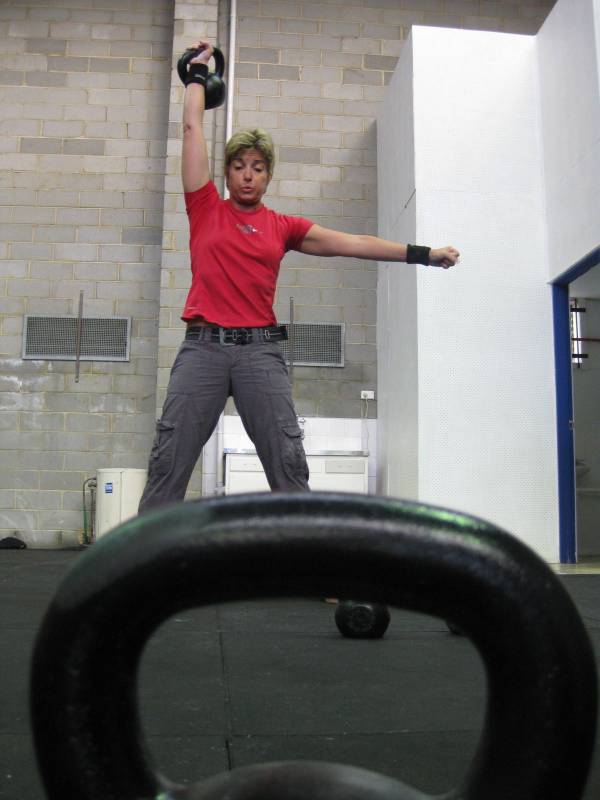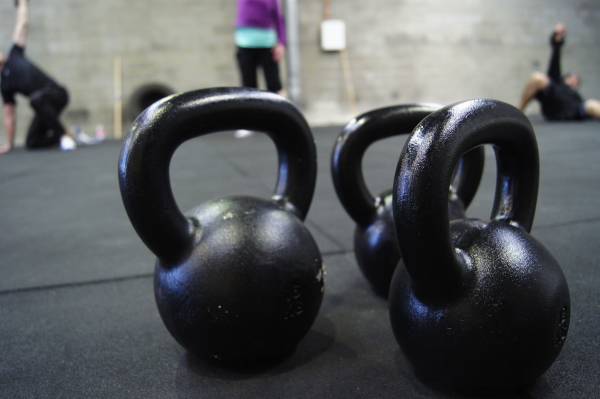Someone far more skilled than I am at my job once told me if I couldn’t explain something simply then I didn’t really understand it.
And that’s how it was when I first got into kettlebells and found my way to the Russian Kettlebell Certification (RKC). I would have these wild explanations that jumped from one spot to the next, e.g., “Kettlebells are good for your shoulders because of the offset weight distribution. Pavel is really flexible.” There was just so much to take in I literally didn’t know where to start when explaining it to people.
For starters the RKC is termed a “Hardstyle” of kettlebell training. That’s not to say that I can think of any version of lifting kettlebells that I would call soft. From the amazing feats of Girevoy competitors who do ten-minute sets of double 32kg long-cycle clean and jerks to the RKC snatch test of one hundred reps in five minutes with a 24kg bell, there’s no soft or easy path visible.
But the term Hardstyle doesn’t refer to its difficulty, nor as many believe, does it refer solely to generating tension throughout the body. Instead the term refers to a type of hand-to-hand combat taught in Russian special operations in the 1970s. Hardstyle kettlebell training was developed in the 1980s to support that.
This blended martial art had its roots in Okinawan Goju Ryu, a martial art known for its hard Japanese influences as well as its flowing Chinese suppleness. Loose like a whip preparing to strike, and as hard as iron when focus is delivered to the blow.
This application of focus, or kime, is necessary to apply an explosive attack “to the target using the appropriate technique and maximum power in the shortest time possible.” In other words, as former RKC Team Leader Randy Hauer stated, we are looking for “power production over power conservation.”
The links between the RKC and martial arts don’t stop with just the name either. To me, the RKC system is more a weighted martial art than a lifting system because of the application of kime. In the same way that a serious karateka will spend hours drilling kata, hand and foot position, and on the smallest detail, so too will a serious RKC work on small details of the kettlebell lifts. We don’t workout, we practice.
By splitting our lifts into two main categories – grinds and ballistics – we are able to focus on two very different, although athletically essential skills, within practice sessions. By employing “maximal acceleration in the quick lifts and maximal tensions in slow lifts” we train both sides of the performance coin – tension and relaxation.
Muscles generate force by creating tension. Tension = force. So we perform our slow lifts with maximal tension as if performing Sanchin kata (for more information please refer to The Way of Sanchin Kata by Wilder). By practicing this skill – with all weights – we effectively use our practice time to shadow box with lighter weights before moving to live combat with the heavier loads. This low stress practice allows the body to learn how to perform the skill of creating tension when needed to safely move the heaviest weights.
 Many will say your body will naturally do what is necessary when lifting a heavy load. Perhaps if your name is Coan or Hatfield, but for the majority of people the skill of lifting a heavy weight is unnatural and foreign and in the same way that you wouldn’t make a white belt beginner full contact spar with a seasoned black belt you shouldn’t let novice lifters try for a max lift until they’ve spent some time applying focus to their technique.
Many will say your body will naturally do what is necessary when lifting a heavy load. Perhaps if your name is Coan or Hatfield, but for the majority of people the skill of lifting a heavy weight is unnatural and foreign and in the same way that you wouldn’t make a white belt beginner full contact spar with a seasoned black belt you shouldn’t let novice lifters try for a max lift until they’ve spent some time applying focus to their technique.
As the RKC manual says, “If you don’t practice these techniques with a light bell, you surely will not be able to do it when you meet a heavy one.”
However, developing or trying to keep the body this stiff and tight during a set of swings just isn’t going to work. And this is one of people’s biggest misunderstandings of the RKC system – we develop appropriate tension, not continual tension. While tension is strength, force, and safety, it is also slow and robotic. The nature of athletic movement is fast, whippy, and loose. In fact, Russian researchers found that elite athletes were able to go from tense to loose and back again 800% faster than the rest of us. A punch lashes out, fast, loose and like a whip only for the fighter to become a solid steel girder behind it at the moment of impact – kime.
Okinawan master Chozo Nakama spoke of “relaxed tension”. And it is this same sense of relaxed tension we are able to apply in properly performed swings. As I’ve written previously in my articles on the swing there is a bell that is the right size for each of us to practice this skill. Continually going after a heavier and heavier bell often results in what Master RKC Brett Jones termed “Uglystyle” – a slow, grinding swing devoid of snap or any semblance of speed and power.
The following is from my original 2009 RKC when I first attended the RKC and is not in the current edition. So even for RKCs, this may be eye opening:
Hardstyle strength is exemplified by powerlifting and Okinawan karate. The common denominator is compression.
Compress the muscles. Because muscles produce force by tensing. Maximize the tension.
Compress the joints. Because a loose joint absorbs the force meant to go elsewhere; it “leaks” power and is easily injured.
Compress the breath. Because a slack waist dissipates force like Jell-o. Because high intra-abdominal pressure increases strength.
Compress the ground. To maximize stability and to take advantage of the reactive forces.
Compress the focus. Direct the force precisely to minimize losses. “Coordination of movement is getting rid of excessive degrees of freedom in different joints…” (Bernshtein) “Steering Strength” (McGill).
Hardtsyle strength training is the practice of the total compression skill.
RKC teaches how to focus the scattered energies of the body into a directed all-out effort while minimizing the odds of injuries.
To me, now with more experience and familiarity with the RKC system and how it relates to all training, when I look at it I just see exactly what you would understand about your activity if you were a world class athlete. You’d have spent many, many years doing low stress practice of your skills – from playing scales if a piano player, to swimming  countless laps, to putting from every conceivable angle on the practice greens. You’d have practiced, with focus, on removing the superfluous and improving essential skills of your pastime.
countless laps, to putting from every conceivable angle on the practice greens. You’d have practiced, with focus, on removing the superfluous and improving essential skills of your pastime.
The essential lesson of the RKC is to spend time practicing your skills, whatever they may be. But don’t limit yourself to one side of the performance coin. To be outstanding you need tension and relaxation – fast and loose. I’ve never seen Pavel write or say, “Comrades, you should just lift,” or, “Comrades, forget lifting, just stretch.” He has as many books on strength as he does on flexibility, joint mobility, and movement. Ignore one or the other at your own athletic peril.
While the breeding ground for Hardstyle may be Russian unarmed combat designed to kill or be killed, the Hardstyle kettlebell system the RKC has become is about the sum of performance.






